
Deutsch-Chinesische Enzyklopädie, 德汉百科
 *Mediterranean Sea
*Mediterranean Sea
—— 拜占庭的起源 ——
拜占庭之名原起于一座靠海的古希腊移民城市,公元 330年罗马皇帝君士坦丁一世在此建城,作为罗马帝国的陪都,并改名为君士坦丁堡。君士坦丁堡位于连接黑海到爱琴海之间的战略水道博斯普鲁斯海峡,扼制海 陆商业要道,地理位置十分优越。公元395年庞大的罗马帝国饱受各路蛮族侵扰,为便于管辖而将帝国一分为二,东部帝国即以君士坦丁堡为首府,因此东罗马帝 国又称为拜占庭帝国。
公元476年西罗马帝国在经历了包括匈奴和诸多日尔曼部落的反复侵袭之后终于咽下了最后一口气,拜占庭遂成为唯一的罗马人帝国——实际上他们一直以纯正罗马血统自居。
—— 战争和衰弱 ——
公元527年,拜占庭迎来了第一位强势的皇帝——查士丁尼一世。其随即任命名将贝利萨留为元帅,向夙敌波斯帝国宣战。公元528年波斯 军大将扎基西斯率3万大军,于次年在尼亚比斯以压倒性兵力逼退贝利萨留,隔年双方军队在两河流域的德拉城再次会战,贝利萨留的军队少到可怜……但波斯军队 犯了愚蠢的错误,他们背城列阵而且要命的是背的不是自己的城,于是多于对手数倍且装备精良的波斯军理所当然(或者匪夷所思)地惨败……随后波斯军一败再 败,但还是于531年卡尔基斯阻挡了贝利萨留的前进步伐,两国终于532年签下停战协议。随后雄心勃勃的查士丁尼再跟达尔旺人开战,贝利萨留出征非洲,可 怜的拜占庭远征军步骑兵总数连马都算上才2万还多个零头!更要命的是其中还包括了大半粗鲁且毫无组织纪律性可言的蛮族雇佣兵。搭船出海取道伯罗奔尼撒、途 经西西里一路磕磕碰碰,直到9月初才踏上非洲大地的贝利萨留不仅不知对手的实力到底是1万还是100万甚至连个详细点的地图都无,幸好当地愿意当向导赚小 费的人还算不少,贝利萨留终于在9月中旬在迦太基撞上达尔旺人的大军。人说强龙难压地头蛇,但贝利萨留却敢于在地头蛇门口大玩迷踪步,一番错综复杂的迂回 使达尔旺人的军队失去了有利地形并分散做几部失去了衔接,惨遭和当年的波斯军同样的命运。外强中干的达尔旺人此后再也没组织起任何一次较像样的反击,终于 534年3月投降,达尔旺王国灭亡。查士丁尼的非洲战役使拜占庭帝国控制了非洲广大的畜牧基地。 (Quelle:games.sina.com.cn/talk/0212/120913641.shtml)
拜占庭帝国是历史上一个著名的帝国。罗马帝国东西分治后,帝国东部延续被称为东罗马帝国(相对于帝国西部的西罗马帝国)。16世纪以后,开始有学者称之为“拜占庭帝国”,被视为新政权。其国民在帝国一千多年的期间仍自称为“罗马帝国”的公民(拉丁语:Imperium Romanum;希腊语:Βασιλεία Ρωμαίων)。帝国位于欧洲东南部,领土曾包括欧亚非三大洲的亚洲西部和非洲北部,是古典时代和中世纪欧洲历史上最悠久的君主制国家。
拜占庭帝国共历经12个王朝及93位皇帝,首都为新罗马(拉丁语:Nova Roma;希腊语:Νέα Ρώμη,即君士坦丁堡)。其疆域在11个世纪中不断变动。色雷斯、希腊和小亚细亚西部是帝国的核心地区;今日的土耳其、希腊、保加利亚、马其顿、阿尔巴尼亚从4世纪至13世纪是帝国领土的主要组成部分;意大利和原南斯拉夫的大部、伊比利亚半岛南部、叙利亚、巴勒斯坦、埃及、利比亚、突尼斯、今阿特拉斯山脉以北的阿尔及利亚和今天摩洛哥的丹吉尔也在7世纪之前曾是帝国的国土。
关于帝国的起始纪年,历史学界仍存有争议。主流观点认为,330年君士坦丁大帝建立新罗马、罗马帝国政治中心东移,是东罗马帝国成立的标志。德国东罗马学者斯坦因以戴克里先皇帝即位(284年;这位皇帝首次将罗马帝国分为东西两半分治)为东罗马帝国的起始纪年。其他观点分别以476年(西罗马帝国灭亡)、527年(查士丁尼一世登基)、7世纪(希腊化开始)和8世纪(希腊化完成)为东罗马帝国起始的标志。
东罗马帝国本为罗马帝国的东半部,较为崇尚希腊文化,与西罗马帝国分裂后,更逐渐发展为以希腊文化、希腊语和及后的东正教为立国基础,在620年,希拉克略皇帝首次让希腊语取代拉丁语,成为帝国的官方语言,使得东罗马帝国成为不同于古罗马和西罗马帝国的国家。在476年西罗马帝国灭亡前和神圣罗马帝国成立后,这个帝国被外人称为“东罗马帝国”,尽管其正式国号仍延续着古罗马帝国时期的国号。直到1557年德意志历史学家赫罗尼姆斯·沃尔夫为了区分其帝国的古罗马时期及神圣罗马帝国而引入了“拜占庭帝国”作为称呼,并被现代史学上所使用。
东罗马帝国的文化和宗教对于今日的东欧各国有很大的影响。此外,帝国在其十一个世纪的悠久历史中所保存下来的古典希腊和罗马史料、著作,以及理性的哲学思想,也为中世纪欧洲突破天主教会神权束缚提供了最直接的动力,引发了文艺复兴运动,并深远地影响了人类历史。
1204年4月13日,东罗马帝国首都君士坦丁堡曾被第四次十字军东征攻陷和劫掠,直到1261年收复。1453年5月29日,奥斯曼帝国攻陷了首都君士坦丁堡,末代皇帝君士坦丁十一世战死,历时一千余年的东罗马帝国就此灭亡,长达1480年的罗马帝国也正式终结。
Das Byzantinische Reich, verkürzt auch nur Byzanz, oder – aufgrund der historischen Herkunft – das Oströmische Reich bzw. Ostrom war ein Kaiserreich im östlichen Mittelmeerraum. Es entstand im Verlauf der Spätantike nach der so genannten Reichsteilung von 395 aus der östlichen Hälfte des Römischen Reiches. Das von der Hauptstadt Konstantinopel – auch „Byzanz“ genannt – aus regierte Reich erstreckte sich während seiner größten Ausdehnung Mitte des sechsten Jahrhunderts von Italien und der Balkanhalbinsel bis zur Arabischen Halbinsel und nach Nordafrika, war aber seit dem siebten Jahrhundert weitgehend auf Kleinasien und Südosteuropa beschränkt. Mit der Eroberung von Konstantinopel durch die Osmanen im Jahr 1453 endete das Reich.
Die Geschichte des Byzantinischen Reiches war von einem Abwehrkampf an den Grenzen gegen äußere Feinde geprägt, der die Kräfte des Reiches erheblich beanspruchte. Dabei wechselten sich bis in die Spätzeit, als das Reich keine ausreichenden Ressourcen mehr hatte, Phasen der Expansion (nach Gebietsverlusten im siebten Jahrhundert Eroberungen im zehnten und elften Jahrhundert) mit Phasen des Rückzugs ab. Im Inneren kam es (besonders bis ins neunte Jahrhundert) immer wieder zu unterschiedlich stark ausgeprägten theologischen Auseinandersetzungen sowie zu vereinzelten Bürgerkriegen, doch blieb das an römischen Strukturen orientierte staatliche Fundament bis ins frühe 13. Jahrhundert weitgehend intakt. Kulturell hat Byzanz der Moderne bedeutende Werke aus Literatur und Kunst hinterlassen. Byzanz spielte auch aufgrund des stärker bewahrten antiken Erbes eine wichtige Mittlerrolle. Hinsichtlich der Christianisierung Osteuropas, bezogen auf den Balkanraum und Russland, war der byzantinische Einfluss ebenfalls von großer Bedeutung.
東ローマ帝国(ひがしローマていこく、英語: Eastern Roman Empire[3])またはビザンツ帝国、ビザンティン帝国は、東西に分割統治されて以降のローマ帝国の東側の領域、国家である。ローマ帝国の東西分割統治は4世紀以降断続的に存在したが、一般的には最終的な分割統治が始まった395年以降の東の皇帝の統治領域を指す。西ローマ帝国の滅亡後の一時期は旧西ローマ領を含む地中海の広範な地域を支配したものの、8世紀以降はバルカン半島、アナトリア半島を中心とした国家となった。首都はコンスタンティノポリス(現在のトルコ共和国の都市であるイスタンブール)であった。
西暦476年に西ローマ帝国がゲルマン人の傭兵隊長オドアケルによって滅ぼされた際、形式上は最後の西ローマ皇帝ロムルス・アウグストゥスが当時の東ローマ皇帝ゼノンに帝位を返上して東西の帝国が「再統一」された(オドアケルは帝国の西半分の統治権を代理するという体裁をとった)ため、当時の国民は自らを古代のローマ帝国と一体のものと考えていた。また、ある程度の時代が下ると民族的・文化的にはギリシャ化が進んでいったことから、同時代の西欧からは「ギリシア帝国」とも呼ばれた。
The Byzantine Empire, also referred to as the Eastern Roman Empire and Byzantium, was the continuation of the Roman Empire in its eastern provinces during Late Antiquity and the Middle Ages, when its capital city was Constantinople (modern-day Fatih, İstanbul, and formerly Byzantium). It survived the fragmentation and fall of the Western Roman Empire in the 5th century AD and continued to exist for an additional thousand years until it fell to the Ottoman Turks in 1453.[2] During most of its existence, the empire was the most powerful economic, cultural, and military force in Europe. Both the terms "Byzantine Empire" and "Eastern Roman Empire" are historiographical exonyms; its citizens continued to refer to their empire simply as the Roman Empire (Greek: Βασιλεία Ῥωμαίων, tr. Basileia Rhōmaiōn; Latin: Imperium Romanum),[3] or Romania (Ῥωμανία), and to themselves as "Romans".[4]
Several signal events from the 4th to 6th centuries mark the period of transition during which the Roman Empire's Greek East and Latin West diverged. Constantine I (r. 324–337) reorganised the empire, made Constantinople the new capital, and legalised Christianity. Under Theodosius I (r. 379–395), Christianity became the Empire's official state religion and other religious practices were proscribed. Finally, under the reign of Heraclius (r. 610–641), the Empire's military and administration were restructured and adopted Greek for official use in place of Latin.[5] Thus, although the Roman state continued and its traditions were maintained, modern historians distinguish Byzantium from ancient Rome insofar as it was centred on Constantinople, oriented towards Greek rather than Latin culture, and characterised by Orthodox Christianity.[4]
The borders of the empire evolved significantly over its existence, as it went through several cycles of decline and recovery. During the reign of Justinian I (r. 527–565), the Empire reached its greatest extent after reconquering much of the historically Roman western Mediterranean coast, including North Africa, Italy, and Rome itself, which it held for two more centuries. The Byzantine–Sasanian War of 602–628 exhausted the empire's resources and contributed to major territorial losses during the Early Muslim conquests of the 7th century wherein it lost its richest provinces, Egypt and Syria, to the Arabs.[6] During the Macedonian dynasty (10th–11th centuries), the empire expanded again and experienced the two-century long Macedonian Renaissance, which came to an end with the loss of much of Asia Minor to the Seljuk Turks after the Battle of Manzikert in 1071. This battle opened the way for the Turks to settle in Anatolia.
The empire recovered again during the Komnenian restoration, and by the 12th century Constantinople was the largest and wealthiest European city.[7] However, it was delivered a mortal blow during the Fourth Crusade, when Constantinople was sacked in 1204 and the territories that the empire formerly governed were divided into competing Byzantine Greek and Latin realms. Despite the eventual recovery of Constantinople in 1261, the Byzantine Empire remained only one of several small rival states in the area for the final two centuries of its existence. Its remaining territories were progressively annexed by the Ottomans over the 14th and 15th century. The Fall of Constantinople to the Ottoman Empire in 1453 finally ended the Byzantine Empire.[8] The last of the imperial Byzantine successor states, the Empire of Trebizond, would be conquered by the Ottomans eight years later in the 1461 Siege of Trebizond.[9]
L’Empire byzantin ou Empire romain d'Orient désigne la civilisation apparue vers le IVe siècle dans la partie orientale de l'Empire romain, au moment où celui-ci se divise progressivement en deux.
L’Empire byzantin se caractérise par sa longévité. Il puise ses origines dans la fondation même de Rome, et la datation de ses débuts change selon les critères choisis par chaque historien. La fondation de Constantinople, sa capitale, par Constantin Ier en 330, autant que la division d’un Empire romain de plus en plus difficile à gouverner et qui devient définitive en 395, sont parfois citées. Quoi qu’il en soit, plus dynamique qu’un monde romain occidental brisé par les invasions barbares, l’Empire d’Orient s’affirme progressivement comme une construction politique originale. Indubitablement romain, cet Empire est aussi chrétien et de langue principalement grecque. À la frontière entre l’Orient et l’Occident, mêlant des éléments provenant directement de l’Antiquité avec des aspects innovants dans un Moyen Âge parfois décrit comme grec, il devient le siège d’une culture originale qui déborde bien au-delà de ses frontières, lesquelles sont constamment assaillies par des peuples nouveaux. Tenant d’un universalisme romain, il parvient à s’étendre sous Justinien (empereur de 527 à 565), retrouvant une partie des antiques frontières impériales, avant de connaître une profonde rétractation. C’est à partir du VIIe siècle que de profonds bouleversements frappent l’Empire byzantin. Contraint de s’adapter à un monde nouveau dans lequel son autorité universelle est contestée, il rénove ses structures et parvient, au terme d’une crise iconoclaste, à connaître une nouvelle vague d’expansion qui atteint son apogée sous Basile II (qui règne de 976 à 1025). Les guerres civiles autant que l’apparition de nouvelles menaces forcent l'Empire à se transformer à nouveau sous l'impulsion des Comnènes avant d’être disloqué par la quatrième croisade lorsque les croisés s'emparent de Constantinople en 1204. S’il renaît en 1261, c’est sous une forme affaiblie qui ne peut résister aux envahisseurs ottomans et à la concurrence économique des républiques italiennes (Gênes et Venise). La chute de Constantinople en 1453 marque sa fin.
Tout au long de son histoire millénaire, une continuité autant que des ruptures rythment l’existence de l’Empire byzantin, objet complexe à analyser dans sa diversité. Héritier d’une riche culture gréco-romaine, il la fait vivre et contribue à la transmettre à l’Occident au moment de la Renaissance. Il développe sa propre civilisation, profondément empreinte de religiosité. Pilier du monde chrétien, il est le défenseur d’un christianisme dit orthodoxe qui rayonne dans l’Europe centrale et orientale où son héritage est encore vivace aujourd’hui, tandis que la séparation des Églises d'Orient et d'Occident inaugure une rupture progressive avec le catholicisme romain.
Qualifié d’« archaïque » ou de « déclinant » dans l’historiographie ancienne, parfois empreinte de mishellénisme, l’Empire byzantin a fait preuve d’une remarquable capacité d’adaptation face aux évolutions du monde qui l’entoure et aux menaces qui l’assaillent constamment, souvent sur plusieurs fronts. Il parvient souvent habilement à user de la diplomatie autant que de la force pour contenir ses ennemis. Sa situation exceptionnelle, au carrefour entre l'Orient et l'Occident dont il contribue à brouiller les frontières, entre monde méditerranéen et bassin pontique, lui permet de développer une économie dynamique, symbolisée par sa monnaie, souvent utilisée bien au-delà de ses frontières. Cette même abondance suscite aussi les convoitises de voisins ambitieux qui se heurtent régulièrement aux puissantes murailles de Constantinople. Celle-ci, plus encore que Rome avec l’Empire romain antérieur, est le centre du monde byzantin. Même au moment de son déclin à partir de 1204, il préserve une vivacité culturelle qui favorise l’émergence de la Renaissance européenne.
Les jugements sur l’Empire byzantin ont profondément varié en fonction des époques. D’un exemple à suivre pour les régimes absolutistes du XVIIe siècle, il est vivement dénoncé en raison même de cet absolutisme et décrit comme décadent au XVIIIe siècle. Ces interprétations ont laissé place à des perspectives historiques plus scientifiques. L’héritage du monde byzantin est cardinal dans la compréhension du monde slave, auquel il a laissé un alphabet et une religion. Au-delà, il a su rayonner, transmettant un droit romain codifié, des chefs d’œuvre architecturaux incarnés par la basilique Sainte-Sophie et, plus largement, une culture originale.
Impero bizantino (395 d.C. - 1453) è il nome con cui gli studiosi moderni e contemporanei indicano l'Impero romano d'Oriente (termine che iniziò a diffondersi durante il regno dell'imperatore Valente), di cultura prevalentemente greca, separatosi dalla parte occidentale, di cultura quasi esclusivamente latina, dopo la morte di Teodosio I nel 395.
Il termine "bizantino" è stato introdotto solo a partire dal XVIII secolo dagli Illuministi, quando l'Impero Romano d'Oriente era ormai scomparso da circa tre secoli. "Romei" (dal greco: Ῥωμιός / Rōmiós) era il termine usato dagli stessi abitanti dell'Impero Romano d'Oriente per definirsi. Come l'Impero bizantino era di fatto Impero romano, così la sua capitale Costantinopoli era la Nuova Roma e così pure il titolo dei suoi sovrani era Basileús kaì Kaìsar ton romaíon (greco: Βασιλεὺς καὶ Καῖσαρ τῶν Ῥωμαίων), ovvero Sovrano e Cesare dei Romani. La stessa Penisola balcanica veniva chiamata dai Romei, Rumelia, nome di regione che sarà conservato pure dai conquistatori ottomani. Gli stessi ottomani utilizzeranno la parola Rūm (in arabo: الرُّومُ, al-Rūm), termine storicamente impiegato dai musulmani per indicare i Bizantini. I sultani ottomani, dopo la conquista di Costantinopoli, si assegneranno il titolo onorifico di qaysar-ı Rum, "Cesare dei Romani", mantenendo il nome di Qusṭanṭīniyya, fino al XX secolo, per la nuova capitale, che sostituiva l'antica anatolica Edirne (Adrianopolis).
Tuttavia per distinguerlo dall'Impero romano d'Occidente, si è preferito assegnare alla parte orientale il nome di "Impero bizantino". Non c'è accordo fra gli storici sulla data in cui si dovrebbe cessare di utilizzare il termine "romano" per sostituirlo con il termine "bizantino", anche perché entrambe le definizioni sono utilizzate da molti di loro, spesso indistintamente, per designare il mondo romano-orientale fino almeno al VII secolo. Le diverse impostazioni storiografiche condizionano anche la diversità di opinioni nella determinazione della datazione: taluni lo fanno coincidere con il 395 (separazione definitiva dei due imperi), ma si è anche proposto il 476 (fine dell'Impero Romano d'Occidente), il 330 (anno di inaugurazione della Nova Roma o Νέα Ῥώμη, fondata da Costantino I, copia fedele e nostalgica della prima Roma), il 565 (morte di Giustiniano I, ultimo imperatore di madrelingua latina e del suo sogno della Restauratio imperii). Alcuni storici prolungano il periodo propriamente "romano" fino al 610, anno dell'ascesa al trono di Eraclio I il quale modificò notevolmente la struttura dell'Impero, rendendo il greco lingua ufficiale al posto del latino.
Resta comunque il fatto che per gli imperatori bizantini e per i propri sudditi il loro impero si identificò sempre con quello di Augusto e Costantino I dal momento che "romano" e "greco" fino al XVIII secolo furono per essi sinonimi.
L'impero, dopo una lunga crisi, la sua distruzione da parte dei crociati nel 1204 e la sua restaurazione nel 1261, cessò definitivamente di esistere nel 1453 (conquista di Costantinopoli da parte dei Turchi ottomani guidati da Maometto II).
El Imperio bizantino o Bizancio fue la parte oriental del Imperio romano que pervivió durante toda la Edad Media y el comienzo del Renacimiento. Este imperio se ubicaba en el Mediterráneo oriental. Su capital se encontraba en Constantinopla (en griego: Κωνσταντινούπολις, actual Estambul), cuyo nombre más antiguo era Bizancio, importante ciudad de la Tracia griega fundada en el 650 a. C. También se conoce al Imperio bizantino como Imperio romano de Oriente, especialmente para hacer referencia a sus primeros siglos de existencia, durante la Antigüedad tardía, época en que el Imperio romano de Occidente todavía existía. Dado que el Imperio romano había establecido que la lengua en todo el territorio debía ser el griego, los historiadores en general coinciden en señalar que el Imperio bizantino fue un imperio griego en alianza política con Roma.23
A lo largo de su dilatada historia, el Imperio bizantino sufrió numerosos reveses y pérdidas de territorio, especialmente durante las guerras romano-sasánidas, guerras bizantino-normandas y las guerras árabo-bizantinas. Aunque su influencia en África del Norte y Oriente Próximo había entrado en declive como resultado de estos conflictos, continuó siendo una importante potencia militar y económica en Europa, Oriente Próximo y el Mediterráneo oriental durante la mayor parte de la Edad Media. Tras una última recuperación de su pasado poder durante la época de la dinastía Comneno, en el siglo XII, el Imperio comenzó una prolongada decadencia durante las guerras otomano-bizantinas que culminó con la toma de Constantinopla y la conquista del resto de los territorios bajo dominio bizantino por los turcos, en el siglo XV.
Durante su milenio de existencia, el Imperio fue un bastión del cristianismo, e impidió el avance del islam hacia Europa Occidental. Fue uno de los principales centros comerciales del mundo, estableciendo una moneda de oro estable que circuló por toda el área mediterránea. Influyó de modo determinante en las leyes, los sistemas políticos y las costumbres de gran parte de Europa y de Oriente Medio, y gracias a él se conservaron y transmitieron muchas de las obras literarias y científicas del mundo clásico y de otras culturas.
En tanto que es la continuación de la parte oriental del Imperio romano, su transformación en una entidad cultural diferente de Occidente puede verse como un proceso que se inició cuando el emperador Constantino I el Grande trasladó la capital a la antigua Bizancio (que entonces rebautizó como Nueva Roma, y más tarde se denominaría Constantinopla); continuó con la escisión definitiva del Imperio romano en dos partes tras la muerte de Teodosio I, en 395, y la posterior caída en 476 del Imperio romano de Occidente; y alcanzó su culminación durante el siglo VII, bajo el emperador Heraclio I, con cuyas reformas (sobre todo, la reorganización del ejército y la adopción del griego como lengua oficial), el Imperio adquirió un carácter marcadamente diferente al del viejo Imperio romano. Algunos académicos, como Theodor Mommsen, han afirmado que hasta Heraclio puede hablarse con propiedad del Imperio romano de Oriente y más adelante de Imperio bizantino, que duró hasta 1453, ya que Heraclio sustituyó el antiguo título imperial de «augusto» por el de basileus (palabra griega que significa 'rey' o 'emperador') y reemplazó el latín por el griego como lengua administrativa en 620, después de lo cual el Imperio tuvo un marcado carácter helénico.
En todo caso, el término Imperio bizantino fue creado por la erudición ilustrada de los siglos XVII y XVIII y nunca fue utilizado por los habitantes de este imperio, que prefirieron denominarlo siempre Imperio romano (griego: Βασιλεία Ῥωμαίων, Basileia Rhōmaiōn; latín: Imperium Romanum) o Romania (Ῥωμανία) durante toda su existencia.
Византи́я, Византи́йская импе́рия, Восто́чная Ри́мская импе́рия, самоназвание Держава Ромеев, Ромейская империя (395[~ 2]—1453) — государство, сформировавшееся в 395 году вследствие давления гуннов на Римскую империю, после смерти императора Феодосия I, распавшееся на западную и восточную части. Чуть больше чем через восемьдесят лет после раздела Западная Римская империя прекратила своё существование, оставив Византию исторической, культурной и цивилизационной преемницей Древнего Рима на протяжении почти десяти столетий истории Поздней Античности и Средневековья[1][2].
Бессменной столицей и цивилизационным центром Византийской империи был Константинополь[3], один из крупнейших городов средневекового мира V—XII вв. Наибольшие владения империя контролировала при императоре Юстиниане I (527—565), вернув себе на несколько десятилетий значительную часть прибрежных территорий бывших западных провинций Рима и положение самой могущественной средиземноморской державы. В дальнейшем под натиском многочисленных врагов государство постепенно утрачивало земли. После славянских, лангобардских, вестготских и арабских завоеваний империя занимала лишь территорию Греции и Малой Азии. Некоторое усиление в IX—XI веках сменилось серьёзными потерями в конце XI века, во время нашествия сельджуков, и поражения при Манцикерте, усилением при первых Комнинах, после распада страны под ударами крестоносцев, взявших Константинополь в 1204 году, очередным усилением при Иоанне Ватаце, восстановлением империи Михаилом Палеологом, и, наконец, окончательной гибелью в середине XV века под натиском османов.



欧罗巴洲(希腊语:Ευρώπη),简称欧洲,字源于希腊神话的“欧罗巴”(希腊语:Ευρώπης),是世界第六大洲,面积10,180,000平方千米(3,931,000平方英里),人口742,073,853(2017年)[1],是世界人口第三多的洲,仅次于亚洲和非洲,人口密度平均每平方公里70人,共有50个已独立的主权国家。
欧洲东以乌拉山脉、乌拉河,东南以里海、高加索山脉和黑海与亚洲为界,西、西北隔大西洋、格陵兰海、丹麦海峡与北美洲相望,北接北极海,南隔地中海与非洲相望。
欧陆最北端是挪威的北角,最南端是西班牙的马罗基角,欧洲是世界上第二小的洲、大陆,仅比大洋洲大一些,其与亚洲合称为欧亚大陆,而与亚洲、非洲合称为欧亚非大陆。
通常,根据政治、经济、文化或实际考虑,欧洲的边界线并不总是一样的。这就使得人们产生了几个不同“欧洲”的观念。
Europa (altgriechisch Εὐρώπη Eurṓpē) ist ein Erdteil, der sich über das westliche Fünftel der eurasischen Landmasse erstreckt. Obwohl es geographisch gesehen ein Subkontinent ist, der mit Asien zusammen den Kontinent Eurasien bildet, wird es historisch und kulturell begründet meist als eigenständiger Kontinent betrachtet. Dies verweist darauf, dass sich der Begriff „Europa“ nicht in der geographischen Definition erschöpft, sondern sich auch auf historische, kulturelle, politische, wirtschaftliche, rechtliche, ideelle Aspekte bezieht.
Die Einwohner Europas werden als Europäer bezeichnet. Mit über 700 Millionen Einwohnern, die auf einer Fläche von etwa 10,5 Millionen Quadratkilometern[2] leben, gehört Europa zu den dichter besiedelten Teilen der Erde. Europa ist stark urbanisiert, besonders im Bereich der Hauptstädte und der Megalopolis „Blaue Banane“. Bedeutende politische Bündnisse Europas sind vor allem der Europarat und die Europäische Union.
ヨーロッパ[注釈 1](ポルトガル語・オランダ語: Europa ポルトガル語: [ew.ˈɾɔ.pɐ] オランダ語: [øːˈroːpaː, ʏˑˈroːpaˑ])又は欧州は、地球上の七つの大州の一つ。漢字表記は欧羅巴。
地理的には、ユーラシア大陸北西の半島部を包括し、ウラル山脈およびコーカサス山脈の分水嶺とウラル川・カスピ海・黒海、そして黒海とエーゲ海を繋ぐボスポラス海峡-マルマラ海-ダーダネルス海峡が、アジアと区分される東の境界となる[1][2]。
面積から見るとヨーロッパ州は世界で2番目に小さな大州であり、1018万km2は地球表面積の2%、陸地に限れば6.8%を占める。アジアに跨る領土を持つロシアは、ヨーロッパ50カ国の中で面積および人口第一位の国家である。対照的に最も小さな国家はバチカン市国である。総人口はアジア・アフリカに次ぐ7億3300万。これは地球総人口の11%である[3]。
ヨーロッパ、特に古代ギリシアは西洋文明発祥の地である[4]。これは、16世紀以降の植民地主義の始まりとともに世界中に拡散し、支配的な役割を果たした。16世紀から20世紀の間、ヨーロッパの国々はアメリカ州、アフリカ、オセアニア、中東、アジアの大部分を支配下に置いた。二度の世界大戦はヨーロッパを戦火で覆い、20世紀中頃の西ヨーロッパによる世界への影響力減衰に結びつき、その地位をアメリカ合衆国とソビエト連邦に奪われる結果となった[5]。
Europe is a continent located entirely in the Northern Hemisphere and mostly in the Eastern Hemisphere. It comprises the westernmost part of Eurasia and is bordered by the Arctic Ocean to the north, the Atlantic Ocean to the west, the Mediterranean Sea to the south, and Asia to the east. Europe is commonly considered to be separated from Asia by the watershed divides of the Ural and Caucasus Mountains, the Ural River, the Caspian and Black Seas and the waterways of the Turkish Straits.[9] Although much of this border is over land, Europe is generally accorded the status of a full continent because of its great physical size and the weight of history and tradition.
Europe covers about 10,180,000 square kilometres (3,930,000 sq mi), or 2% of the Earth's surface (6.8% of land area), making it the sixth largest continent. Politically, Europe is divided into about fifty sovereign states, of which Russia is the largest and most populous. European Russia, its western part, covers up to 39% of the continent and comprises 15% of its population. Europe had a total population of about 741 million (about 11% of the world population) as of 2018.[2][3] The European climate is largely affected by warm Atlantic currents that temper winters and summers on much of the continent, even at latitudes along which the climate in Asia and North America is severe. Further from the sea, seasonal differences are more noticeable than close to the coast.
Europe, in particular ancient Greece and ancient Rome, was the birthplace of Western civilisation.[10][11][12] The fall of the Western Roman Empire in 476 AD and the subsequent Migration Period marked the end of ancient history and the beginning of the Middle Ages. Renaissance humanism, exploration, art and science led to the modern era. Since the Age of Discovery, Europe played a predominant role in global affairs. Between the 16th and 20th centuries, European powers controlled at various times the Americas, almost all of Africa and Oceania and the majority of Asia.
The Age of Enlightenment, the subsequent French Revolution and the Napoleonic Wars shaped the continent culturally, politically and economically from the end of the 17th century until the first half of the 19th century. The Industrial Revolution, which began in Great Britain at the end of the 18th century, gave rise to radical economic, cultural and social change in Western Europe and eventually the wider world. Both world wars took place for the most part in Europe, contributing to a decline in Western European dominance in world affairs by the mid-20th century as the Soviet Union and the United States took prominence.[13] During the Cold War, Europe was divided along the Iron Curtain between NATO in the West and the Warsaw Pact in the East, until the revolutions of 1989 and fall of the Berlin Wall.
In 1949 the Council of Europe was founded with the idea of unifying Europe to achieve common goals. Further European integration by some states led to the formation of the European Union (EU), a separate political entity that lies between a confederation and a federation.[14] The EU originated in Western Europe but has been expanding eastward since the fall of the Soviet Union in 1991. The currency of most countries of the European Union, the euro, is the most commonly used among Europeans; and the EU's Schengen Area abolishes border and immigration controls between most of its member states.
L’Europe est considérée politiquement comme un continent ou géographiquement comme une partie des supercontinents de l'Eurasie et de l'Afro-Eurasie. Elle est parfois appelée le « Vieux Continent » ou « Ancien Monde », par opposition au « Nouveau Monde » (l'Amérique). Sur le plan culturel, l'Europe a reçu de multiples influences au cours des âges, et comprend de nombreux pays qui possèdent à la fois un héritage commun, des différences linguistiques, religieuses et historiques, et des apports récents venus depuis la mondialisation. À ce titre, l'Europe est un espace de civilisation forgé par une histoire millénaire. Une communauté de peuples, de différents États, tend à se constituer politiquement avec l'Union européenne. Ses habitants sont les Européens.
L'Europe, et plus particulièrement la civilisation gréco-romaine, est le berceau de la civilisation occidentale. Entre le XVIe siècle et le XXe siècle, plusieurs nations européennes ont contrôlé et colonisé à plusieurs reprises l'ensemble du continent américain, la quasi-totalité de l'Afrique, l'Océanie et de grandes parties de l'Asie. L'Europe est également à l'origine de plusieurs bouleversements historiques majeurs, comme la Renaissance, les grandes découvertes, le siècle des Lumières, la révolution industrielle ou des guerres mondiales.
L'Europa (/euˈrɔpa/[2]) è una regione geografica del mondo, comunemente considerata un continente in base a fattori storico-culturali e geopolitici. È l'unico continente situato interamente nell'emisfero settentrionale. Costituisce l'estremità occidentale del supercontinente euroasiatico, o anche una delle tre parti del supercontinente Eurafrasia. Assieme al Medio Oriente, fu la culla della civiltà occidentale.
La storia e la cultura europea hanno influenzato notevolmente quelle degli altri continenti, verso i quali, a partire dal XVI secolo, sono state frequenti e massicce le migrazioni, specialmente in America e in Oceania, dove gli europei sono ora in maggioranza rispetto alle popolazioni locali.
Europa es uno de los continentes que conforman el supercontinente euroasiático, situado entre los paralelos 35º 30’ y 70º 30’ de latitud norte. De forma convencional y por motivos histórico-culturales es considerada un continente, tras la delimitación realizada por el geógrafo ruso Vasili Tatíshchev quien deseaba señalar la pertenencia de Rusia a Europa y a Asia.1
Las fronteras de Europa y su población son objeto de controversia, ya que el término continente puede referirse a un bien cultural y político o a distinciones fisiográficas. Andreas Kaplan describe a Europa como «una máxima diversidad cultural en una superficie geográfica mínima».2
La definición más extendida es aquella que la sitúa en la mitad occidental del hemisferio norte, limitada por el océano Ártico en el norte hasta el mar Mediterráneo por el sur. Por el oeste, llega hasta el océano Atlántico. Por el este, limita con Asia, de la que la separan los montes Urales, el río Ural, el mar Caspio, la cordillera del Cáucaso, el mar Negro y los estrechos del Bósforo y de Dardanelos.3
Europa es el segundo continente más pequeño en términos de superficie. Abarca 10 530 751 kilómetros cuadrados o el 2 % de la superficie del mundo y alrededor de 6,8 % del total de las tierras emergidas. Alberga un gran número de estados soberanos, cuyo número exacto depende de la definición de la frontera de Europa, así como de la exclusión o inclusión de estados parcialmente reconocidos. De todos los países europeos, Rusia es el mayor en superficie (al mismo tiempo que es el estado soberano reconocido internacionalmente más extenso del mundo), mientras que la Ciudad del Vaticano es el más pequeño (al mismo tiempo que es el estado soberano e internacionalmente reconocido más pequeño del mundo). Europa es el cuarto continente más poblado después de Asia, África y América, con una población de 740 813 959 (año 2015) o alrededor del 10,03 % de la población mundial.4
Europa, en particular la Antigua Grecia, es la cuna de la cultura occidental. La caída del Imperio Romano de Occidente, durante el período de la migración, marcó el fin de la Edad Antigua y el comienzo de una era conocida como la Edad Media.
El Renacimiento con sus consiguientes humanismo, arte y ciencia, además de la exploración llevaron al "viejo continente", y finalmente al resto del mundo, a la Edad Moderna. A partir de este período las naciones europeas desempeñan un papel preponderante en los asuntos mundiales, desde el siglo XVI en adelante especialmente, después del comienzo de la colonización. En los siglos XVII y XVIII, las naciones europeas controlaron la mayor parte de África, América, y gran parte de Asia, y posteriormente también Oceanía.
La Revolución Industrial, que comenzó en el Reino Unido en el siglo XVIII, dio lugar a un cambio radical en los ámbitos económico, cultural y social en Europa Occidental, y posteriormente en el resto del mundo.
La Primera Guerra Mundial y la Segunda Guerra Mundial condujeron a una disminución en el dominio de Europa en los asuntos mundiales cuando los Estados Unidos y la Unión Soviética tomaron la preeminencia.
La Guerra Fría entre las dos superpotencias dividió Europa a lo largo del Telón de Acero. La integración europea dio lugar a la formación del Consejo de Europa y la Unión Europea en Europa occidental, las cuales se han expandido hacia el este desde la caída de la Unión Soviética en 1991.
Actualmente, naciones que ejercen poder hegemónico mundial como Estados Unidos son el resultado de la colonización europea.
Евро́па — часть света в Северном полушарии Земли, омывается морями Северного Ледовитого и Атлантического океанов, имеет площадь около 10 млн км². Вместе с Азией образует материк Евразия, Европейская культура как Западная противопоставляется Азиатской как Восточной в рамках объединяюще-разнообразного географического пространства.
Население Европы составляет приблизительно 754 миллиона человек или около 9 % населения Земли (2019). Прирост населения сравнительно медленный и средний возраст сравнительно высокий по отношению к другим континентам мира.
В Античности и с эпохи Возрождения Европа оказала доминирующее влияние в сфере культуры, экономики и социальных движений в мире. Население Европы важно не только исторически, но и для понимания нынешних международных отношений и вопросов народонаселения. Самое раннее появление людей современного физического типа (Homo sapiens) в Европе, известное на настоящий момент, датируется 35 тыс. лет назад, а 28 тысяч лет назад, вероятно, окончательно исчез неандерталец. Проникновение протоиндоевропейцев в Европу датируется 4-м тысячелетием до н. э., с которым связывают появление Баденской, Ямной и культуры Боевых топоров. Из пяти древнейших постоянно населённых городов два находятся в Европе, остальные три — в Азии; со времён Античности уровень урбанизации и уровень жизни городского населения Европы был выше чем на других материках. В некоторых регионах Европы урбанизация достигала 50 % против максимум 5—10 % в Азии. В Древней Греции зародилась Западная цивилизация, являющаяся вершиной достижения в человеческой истории, подарившая Миру прогрессивную систему отношений в науке, экономике, производительной силе человеческого гения (подавляющее большинство достижений политики, науки и культуры связаны с воззрениями сложившимися в восточном средиземноморье Европы). Великое переселение народов легло в основу формирования латинской языковой системы Европы, на основе которой образовались многие языки Западной Европы. В X веке до н. э. в Европе проживала половина населения Земли, в 1930-м 25 % (ныне около 9 %), в Средние Века почти 95 % христиан проживала в Европе (сейчас большинство христиан проживает за пределами Европы), почти вся промышленность в XIX в концентрировалась в Европе (в XXI в — более 80 % за пределами Европы).

 *Mediterranean Sea
*Mediterranean Sea
 Cuisine française
Cuisine française

 Eat and Drink
Eat and Drink
 French cuisine
French cuisine

 Agriculture, forestry, livestock, fishing
Agriculture, forestry, livestock, fishing

·通常认为,葡萄酒起源于公元前6000年的古波斯,那时有了葡萄种植和葡萄酒酿造。
·古希腊人喜欢葡萄酒。荷马史诗中多次提到葡萄酒。古希腊的葡萄酒神是迪奥尼索斯 Dionysos).
·古罗马人喜欢葡萄酒,有历史学家将古罗马帝国的衰亡归咎于古罗马人饮酒过度而人种退化。古罗马的酒神是巴克斯(Bacchus)。
·古罗马帝国的军队征服欧洲大陆的同时也推广了葡萄种植和葡萄酒酿造,公元1世纪时,征服高卢 (今法国),法国葡萄酒就此起源,最初的葡萄种植在法国南部罗讷河谷。2世纪时到达波尔多地区。
·葡萄酒在中世纪的发展得益于基督教会。圣经中521次提及葡萄酒。耶酥在最后的晚餐上说 '面包是我的肉,葡萄酒是我的血',基督教把葡萄酒视为圣血,教会人员把葡萄种植和葡萄酒酿造作为工作。例如,法国勃艮第产区的葡萄酒酿造就归功于修道士们的精心栽培及从罗马迁居于阿维农的教皇们的喜好。
·葡萄酒随传教士的足迹传播世界。西方葡萄酒的在17世纪传入中国也是传教士所为。
·1864年,葡萄蚜虫灾害曾席卷法国,法国的大部分葡萄园被毁,幸亏人们发明了把法国葡萄枝嫁接在抗虫害的美国葡萄根上,才使法国葡萄种植绝处逢生。 (Quelle:http://www.frenchwine.com.cn)

直布罗陀(英语:Gibraltar)是14个英国海外领土之一[1],也是最小的一个,位于伊比利亚半岛的末端,是通往地中海的入口[2][3]。
直布罗陀面积约为6平方公里,北接西班牙安达鲁西亚加的斯省。直布罗陀巨岩是直布罗陀主要的地标之一。直布罗陀的人口集中在该区域的南部,容纳了直布罗陀人和其他民族共三万多人。[4]居民人数包括常住的直布罗陀人,一些常驻的英国人(包括英国军人的妻子和家人,未包括军人本身)和非英国居民。没有包括参观的游客和短暂停留的人士。
Gibraltar (/dʒɪˈbrɔːltər/; Spanish pronunciation: [xiβɾalˈtaɾ]) is a British Overseas Territory located at the southern tip of the Iberian Peninsula.[8][9] It has an area of 6.7 km2 (2.6 sq mi) and is bordered to the north by Spain. The landscape is dominated by the Rock of Gibraltar at the foot of which is a densely populated city area, home to over 30,000 people, primarily Gibraltarians.[10] It shares a maritime border with Morocco. Under the Gibraltar constitution of 2006, Gibraltar has limited powers of self-government, with some responsibilities, such as defence and foreign relations, remaining with the British government.
In 1704, Anglo-Dutch forces captured Gibraltar from Spain during the War of the Spanish Succession on behalf of the Habsburg claim to the Spanish throne. The territory was ceded to Great Britain in perpetuity under the Treaty of Utrecht in 1713. During World War II it was an important base for the Royal Navy as it controlled the entrance and exit to the Mediterranean Sea, which is only 8 miles (13 km) wide at this naval "choke point". It remains strategically important, with half the world's seaborne trade passing through the strait.[11][12][13] Today Gibraltar's economy is based largely on tourism, online gambling, financial services and cargo ship refuelling.[14][15][16][17]
The sovereignty of Gibraltar is a point of contention in Anglo-Spanish relations because Spain asserts a claim to the territory.[18][15] Gibraltarians rejected proposals for Spanish sovereignty in a 1967 referendum and, in a 2002 referendum, the idea of shared sovereignty was also rejected.
Gibraltar (de l'arabe « جبل طارق », « Djebel Tariq », « le mont de Tariq » du nom de Tariq ibn Ziyad) est un territoire britannique d'outre-mer3, situé au sud de la péninsule Ibérique, en bordure du détroit de Gibraltar qui relie la Méditerranée à l'océan Atlantique. Il correspond au rocher de Gibraltar et à ses environs immédiats et est séparé de l'Espagne par une frontière de 1,2 kilomètre.
Gibraltar est possession du Royaume-Uni depuis 1704. Les forces armées britanniques y conservent une présence relativement importante. Bien que la majorité de sa population y soit opposée4,5, Gibraltar est revendiqué par l'Espagne. La question de Gibraltar est une cause majeure de dissension dans les relations hispano-britanniques.
Gibraltar fait partie de l'Union européenne (dans le cadre de laquelle il bénéficie d'un statut spécial6) mais pas de l'espace Schengen7. Ce statut est toutefois menacé par la procédure de retrait du Royaume-Uni de l'Union européenne qui a été déclenchée le 29 mars 2017 à la suite du référendum du 23 juin 2016 organisé sur l'ensemble du territoire britannique8. Cependant, les résultats locaux de la consultation dénotent que 96 % des Gibraltariens souhaitent rester au sein de l'UE, tout en espérant obtenir un statut similaire à celui octroyé à Andorre ou au Liechtenstein9.
Les habitants de Gibraltar sont les Gibraltariens et les Gibraltariennes.
Gibilterra (in inglese: Gibraltar, /dʒɨˈbɹɒltə/; come in spagnolo, /xiβɾalˈtaɾ/) è un territorio d'Oltremare del Regno Unito.
Inserita nella lista delle Nazioni Unite dei territori non autonomi, Gibilterra si trova nell'Europa sudoccidentale, sulla costa meridionale della Spagna, all'estremità orientale dello stretto omonimo, che collega l'oceano Atlantico e il mar Mediterraneo. Confina interamente con La Línea de la Concepción, comune spagnolo in provincia di Cadice (Andalusia). Viene considerata dalla Spagna come una vera e propria, nonché ultima, colonia in territorio europeo.
Un tempo nota come Calpe, una delle Colonne d'Ercole, deve il suo nome attuale alla corruzione del nome arabo Jabal Ţāriq (جبل طارق, ossia "Monte di Tariq"), così chiamato in omaggio a Tariq ibn Ziyad, il condottiero berbero che conquistò la Spagna nel 711[2].
Gibraltar (en inglés: Gibraltar, AFI: [dʒɨˈbrɔːltər]) es un territorio británico de ultramar5situado en una pequeña península del extremo sur de la península ibérica, haciendo frontera únicamente con España, país que reclama su soberanía. Para la Organización de las Naciones Unidas, Gibraltar, como colonia,678 es uno de los territorios no autónomos bajo supervisión de su Comité Especial de Descolonización, al igual que otros dieciséis casos más.6
Atendiendo al artículo x del Tratado de Utrecht, «la ciudad y castillos de Gibraltar, juntamente con su puerto, defensas y fortalezas» en 17139 serían una propiedad a perpetuidad de la Corona británica en territorio de jurisdicción española, debiendo retornar a España si el Reino Unido renunciase o enajenase de alguna manera dicha propiedad. El istmo entre el peñón y las otras fortificaciones españolas es para España territorio ocupado, atendiendo a su interpretación del tratado.351011
Gibraltar está situado en el extremo meridional de la península ibérica, al este de la bahía de Algeciras, y se extiende sobre la formación geológica del peñón de Gibraltar (en inglés: the Rock of Gibraltar o también, the Rock), península que domina la orilla norte del estrecho homónimo, comunicando el mar Mediterráneo y el océano Atlántico. Alberga una población de 29 752 habitantes en una superficie de menos de 7 km², con una economía basada en el sector de servicios, principalmente como centro financiero, turístico y puerto franco. Aprovechando su privilegiada posición estratégica, cuenta con una base aeronaval de las Fuerzas Armadas Británicas.
Gibraltar fue conocida en la antigüedad como promontorio o monte Calpe (en latín: Mons Calpe),12 una de las dos míticas columnas de Hércules, y posteriormente renombrada como derivación del árabe Ẏabal Tāriq (جبل طارق), o «montaña de Tariq»,13 en recuerdo del general Táriq ibn Ziyad, quien dirigió el desembarco en este lugar de las fuerzas del Califato Omeya de al-Walid I en 711. Integrada en la Corona de Castilla desde la segunda mitad del siglo XV, fue ocupada en 1704 por una escuadra angloholandesa en apoyo del Archiduque Carlos, pretendiente durante la Guerra de Sucesión Española, al término de la cual, las Coronas británica y la española firmaron el Tratado de Utrecht en 1713. Desde entonces, el devenir político de Gibraltar ha sido objeto de controversia en las relaciones hispano-británicas.
Гибралта́р (англ. Gibraltar [dʒɪˈbrɔːltɚ]) — заморская территория Великобритании, оспариваемая Испанией, на юге Пиренейского полуострова, включающая Гибралтарскую скалу и песчаный перешеек, соединяющий скалу с Пиренейским полуостровом[4].
Занимает стратегическую позицию над Гибралтарским проливом, соединяющим Средиземное море с Атлантическим океаном. Военно-морская база НАТО.
Гибралтар является членом Европейского союза через членство Великобритании. В 1973 году Великобритания присоединилась к ЕС вместе с Гибралтаром (но без Нормандских островов и острова Мэн)[5] в соответствии со статьёй 299 (4) Договора о Европейском сообществе. После ратификации и вступления в силу Лиссабонского договора 2007 года данный Договор стал именоваться Договором о функционировании Европейского союза. На него не распространяется общая сельскохозяйственная политика ЕС, шенгенские соглашения, также он не является общей таможенной территорией ЕС, поэтому здесь нет НДС[6].
C 2004 года жители Гибралтара могут участвовать в выборах в Европейский парламент. Граждане Гибралтара являются гражданами Великобритании и ЕС.
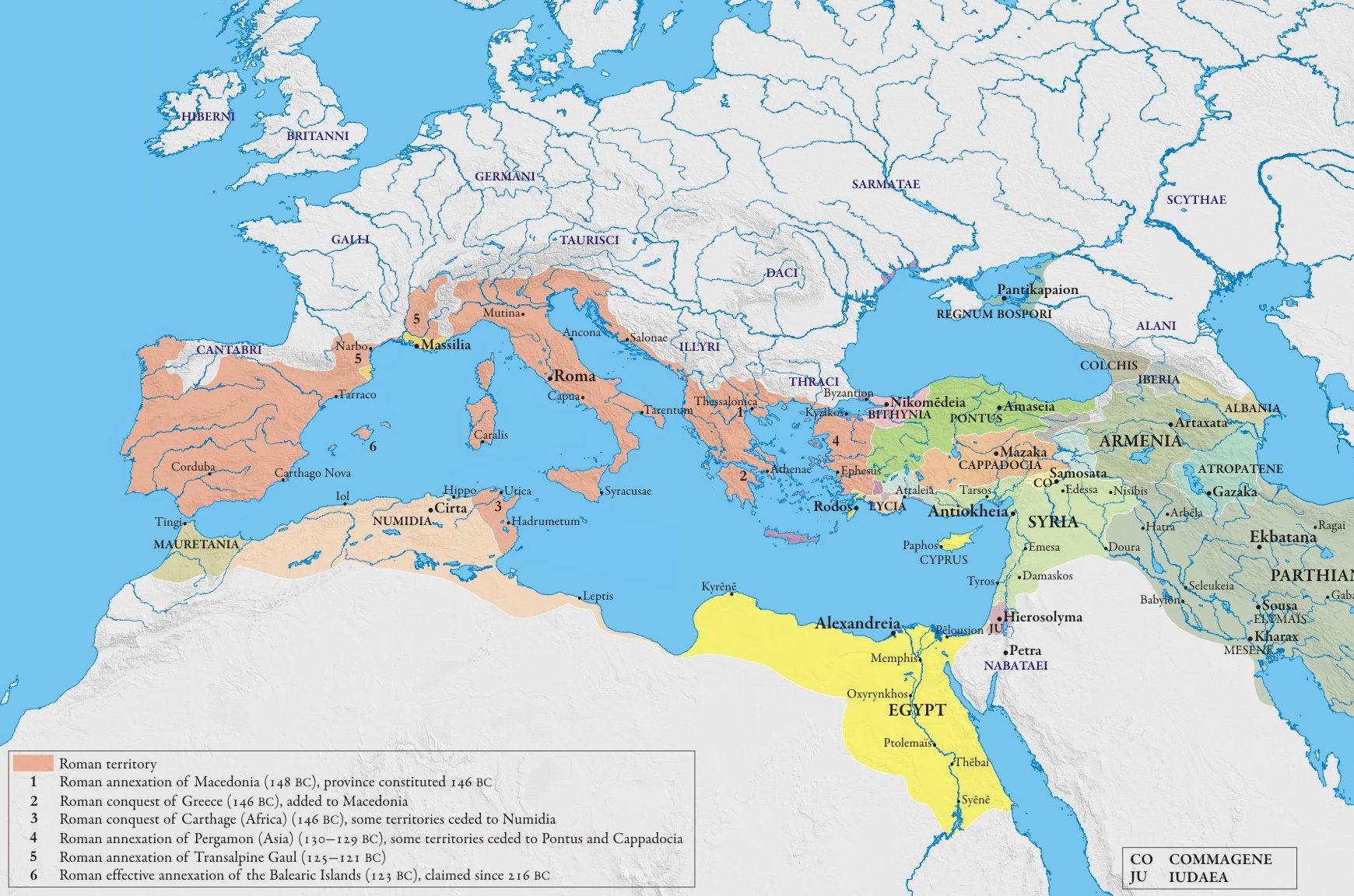
希腊的罗马时期是希腊历史中的一段期间,从西元前146年罗马人占领科林斯开始,直到君士坦丁一世于330年将罗马帝国的首都从罗马迁到拜占庭,并将该地改称新罗马为止。
在罗马统治时期,不少罗马皇帝为希腊城市增添了新建筑,特别是雅典的古雅典阿哥拉,风之塔遗址亦在其中。此时期希腊人的生活大概与希腊化时代一致。而古罗马文化亦在很大程度上受到希腊文化的影响。同样地,许多罗马皇帝亦有仰慕希腊文化,如尼禄就曾于66年出访希腊,并参与了古代奥林匹克运动会。另外,哈德良(117-138年在位)亦崇尚希腊文化,既在雅典卫城外建造了哈德良拱门,又在雅典城建了不少神庙。
同时期基督教开始向希腊和罗马帝国东部传播,如圣保罗就曾在第二、三次传教旅行到马其顿、帖撒罗尼迦、哥林多和雅典传教。希腊逐渐成为罗马帝国内基督教传播率最高的地区之一。


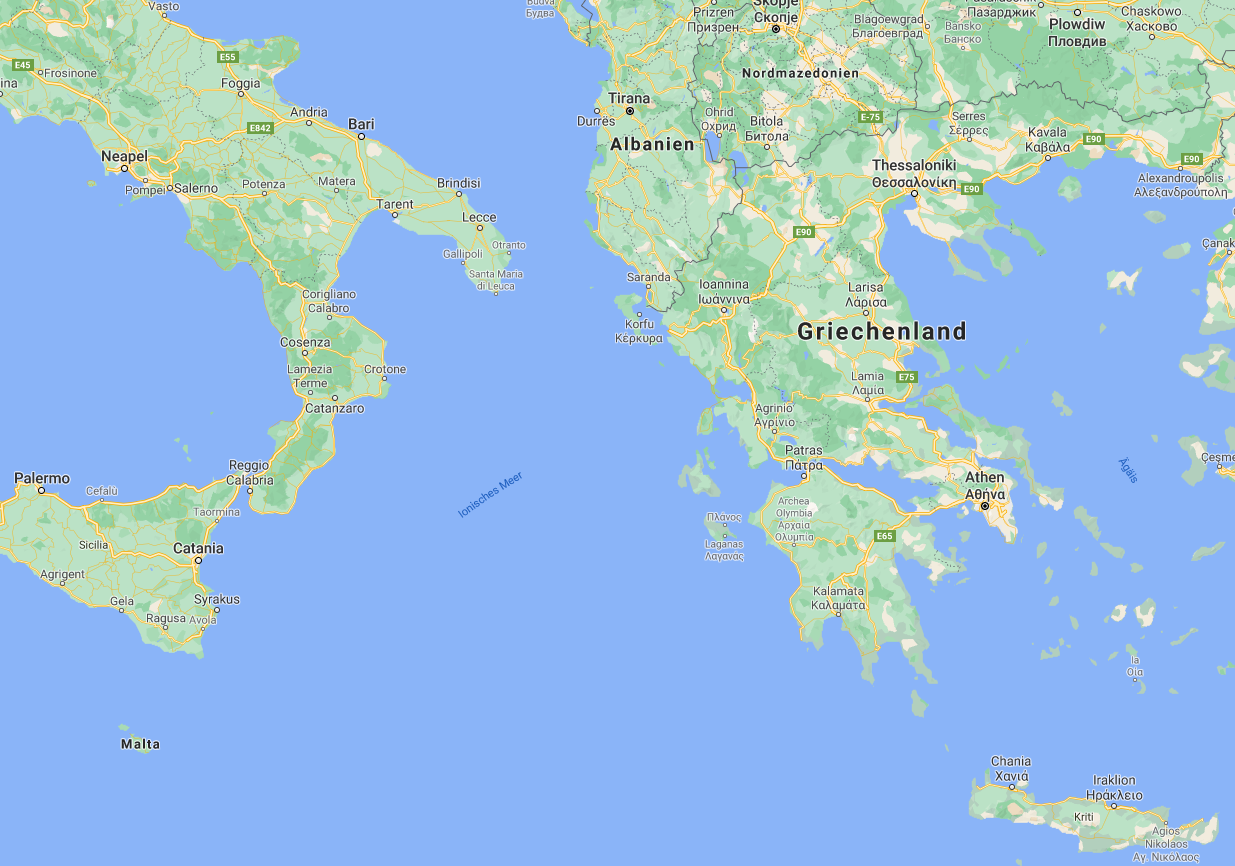
 *Mediterranean Sea
*Mediterranean Sea
 Italy
Italy

 Agriculture, forestry, livestock, fishing
Agriculture, forestry, livestock, fishing

 Lombardia
Lombardia

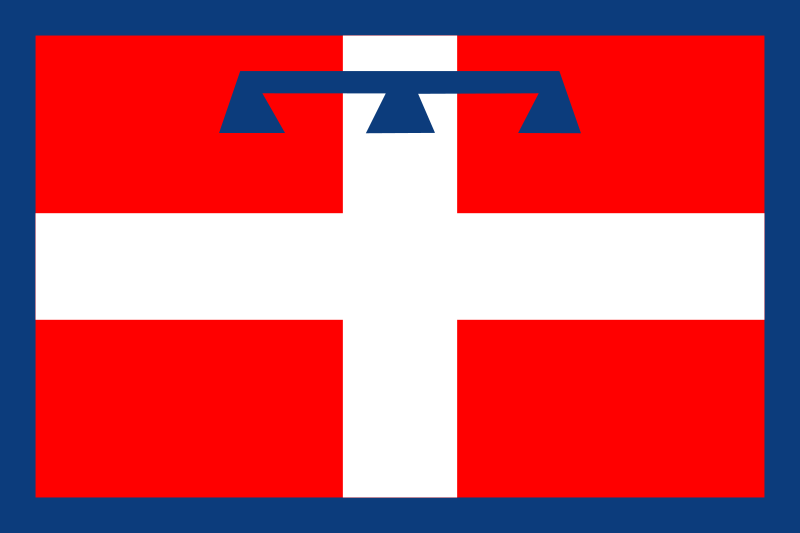 Piemonte
Piemonte

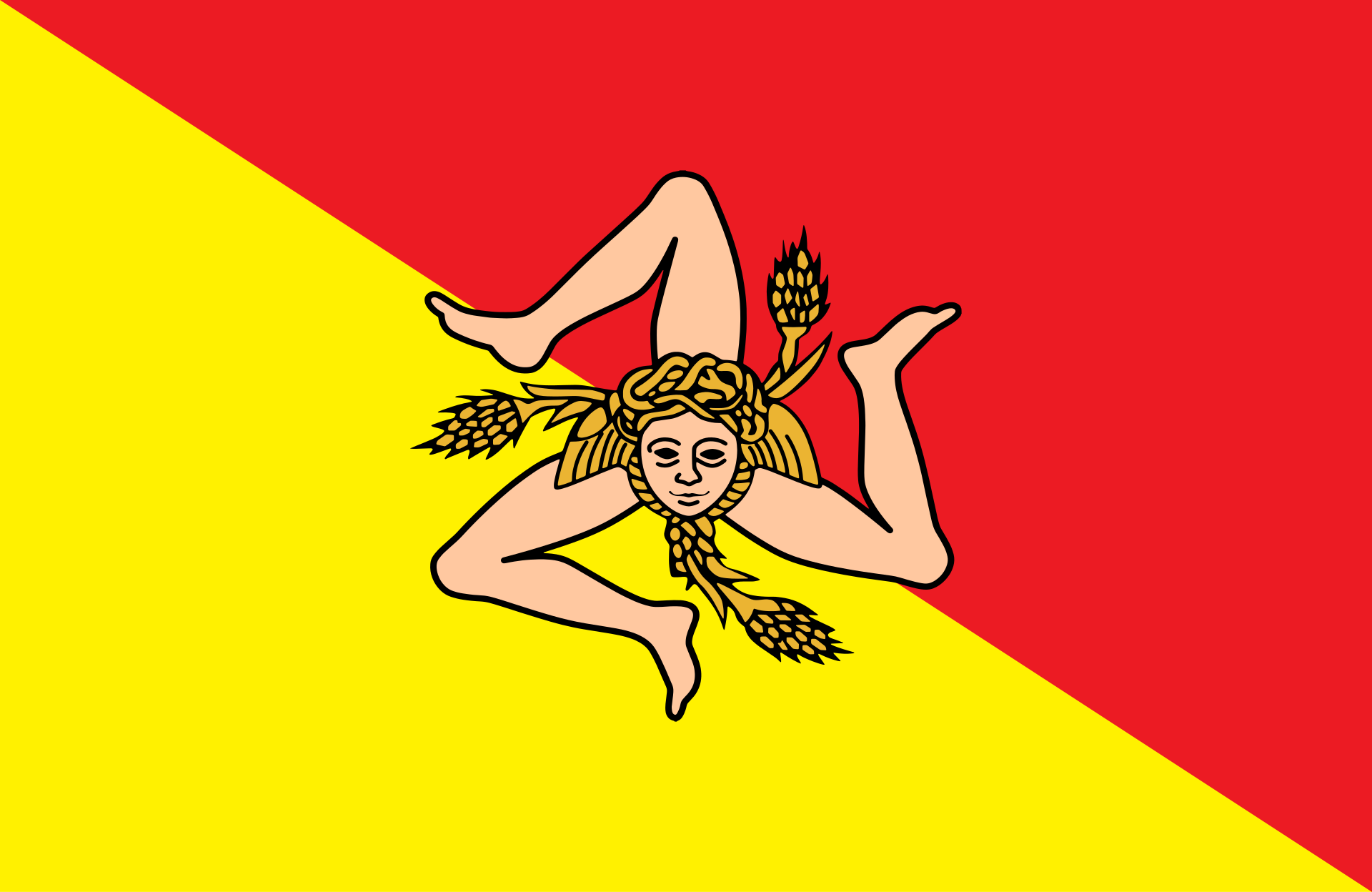 Sicilia
Sicilia

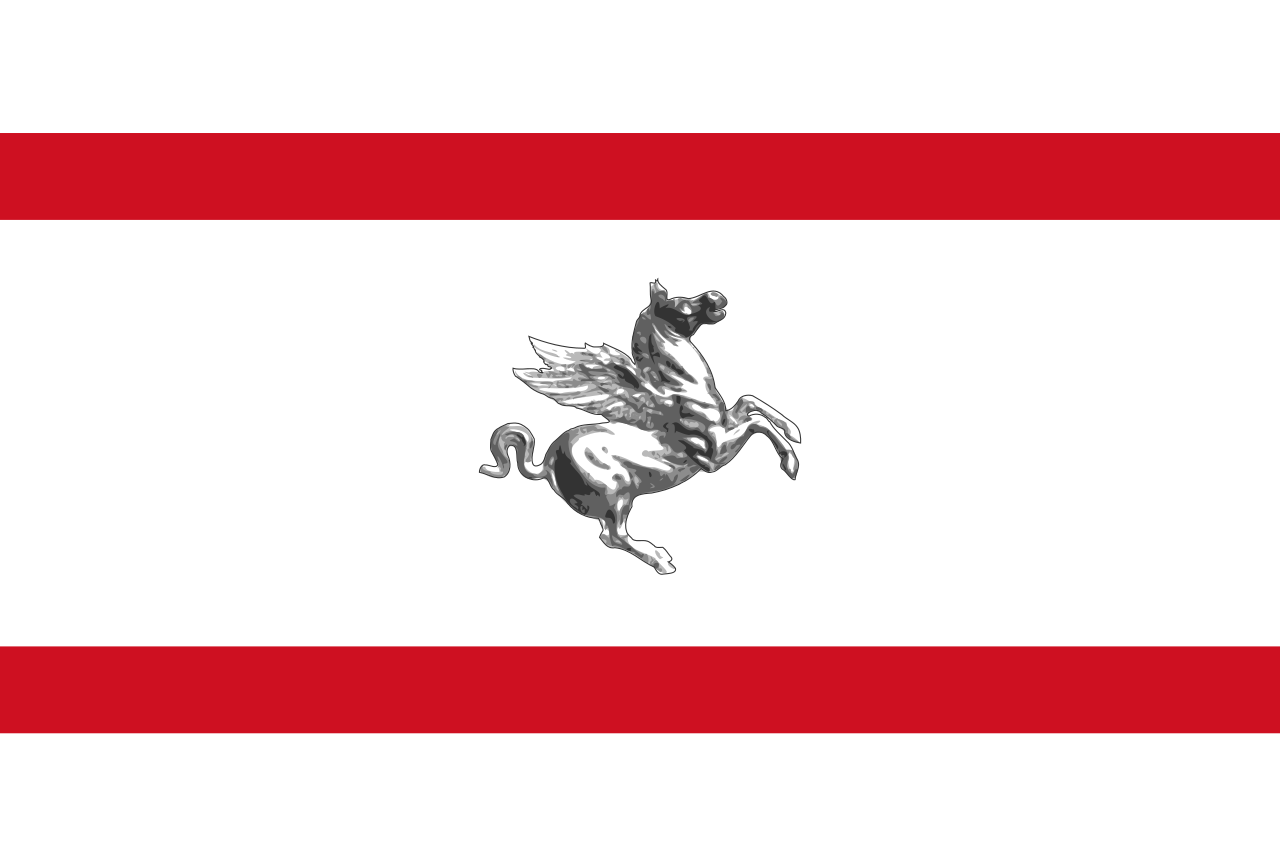 Toscana
Toscana

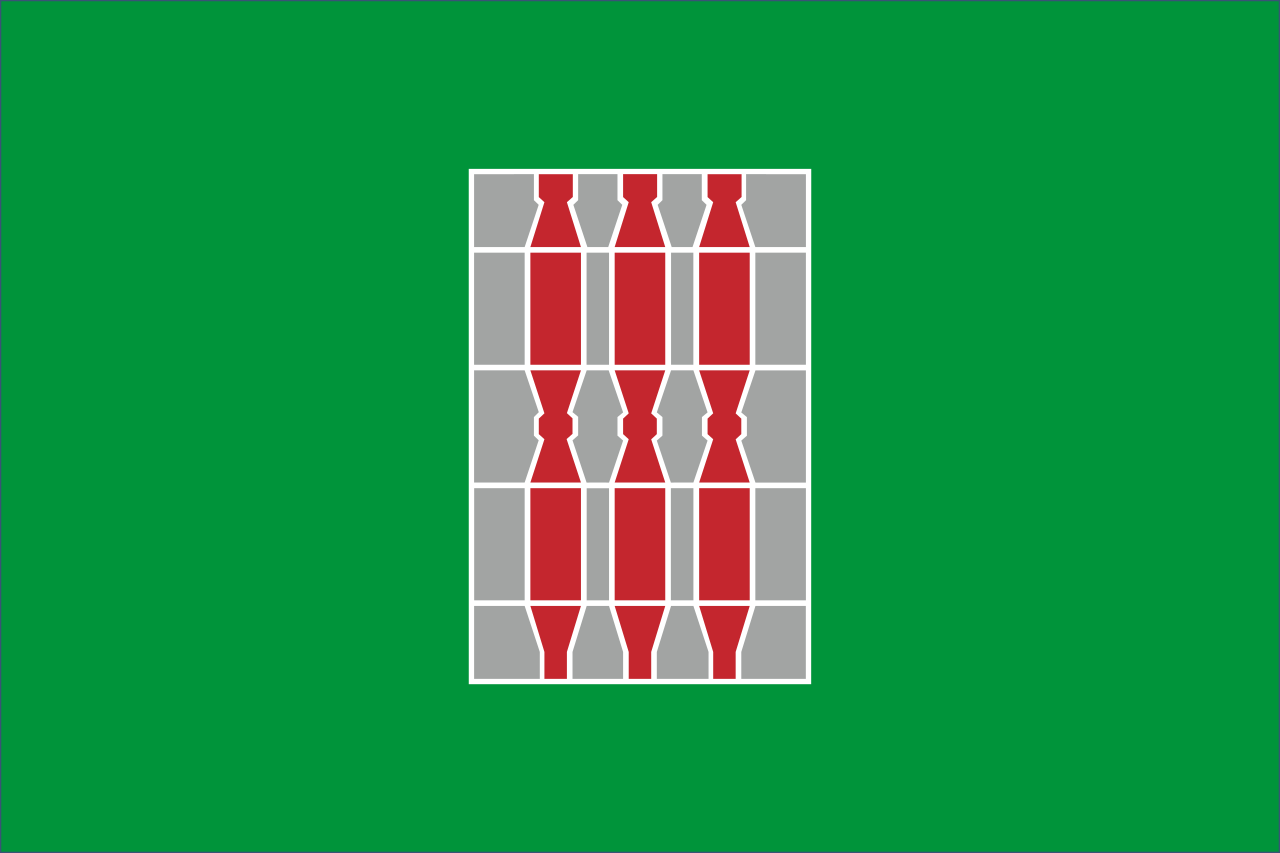 Umbria
Umbria

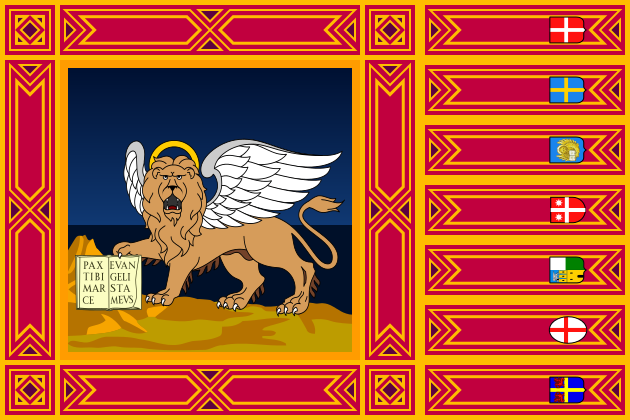 Veneto
Veneto
一概而论地评价意大利葡萄酒好于或差于其他国家的葡萄酒是不负责任的。因为,这个国家有着庞大的葡萄酒产量、惊人的风格多样性,当然也存在不同品质 的差异。在意大利很多地方依然保留着传统甚至显得过时的酿酒方法,可这并不妨碍他们酿造出最出色的酒。新式的酿酒方法也被广泛采用,而且对于普通情况来 说,这是提升意大利葡萄酒品质的重要手段。无论是传统亦或是创新,这些酿造技术被深谙酿酒之道的人采用都会获得经典佳酿。那些意大利传统的维护者和创新者 之间,或许有些小的争论,但是他们都最终获得国际市场的认可。
意大利和法国每年都在争夺世界上最大的葡萄酒生产国、出口国还有消费国的头衔。这两个国家每年大约生产6百万吨的葡萄酒,年出口量约占其总产量的四 分之一,意大利和法国的年人均消费葡萄酒量几乎一样,大约是50升(25年前为90升)。意大利酿酒葡萄种植面积约为922,000公顷,法国与其相当, 有917,000公顷(从这个数据上看,相比于西班牙的1,166,000公顷就略显失色)。很明显,从产量、出口量、消费量以及葡萄园面积来看,意大利 和法国几乎没有太大差别。
意大利的最大出口市场,按照出口额统计为美国。意大利出口的葡萄酒差不多有三分之二被大批散装地运到其他国家进行调配,尤其是德国(占总出口量的 38%)和法国(占总出口量的25%),许多葡萄酒被蒸馏成工业酒精中——大约占整体葡萄酒产量的15% ——相当于整个北美葡萄酒产量的一半。 所以尽管意大利的葡萄酒产量惊人,其中被装瓶且带有商标的酒款大约只占总产量的30-40%,这些远不及意大利被评为DOC级酒的一半数量,(详情请见关 于意大利葡萄酒法律部分),这也意味着等级分类的葡萄酒总量大约是整体产量的14%。(Quelle:http://www.italiawinealliance.com.cn)
 History
History

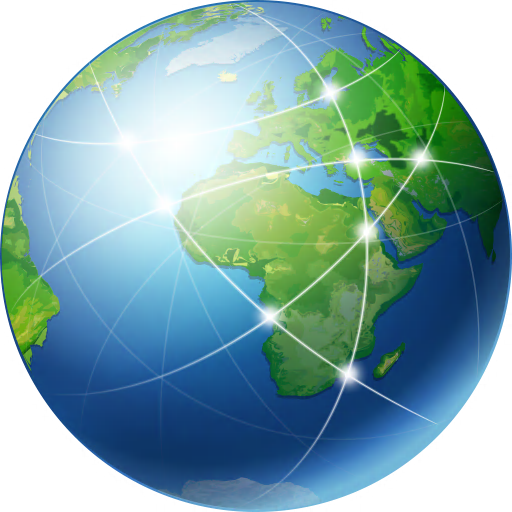 Geography
Geography
 Architecture
Architecture
 Review
Review
 Traditions
Traditions
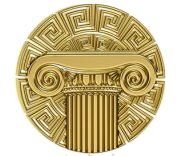 Civilization
Civilization
 Botany
Botany
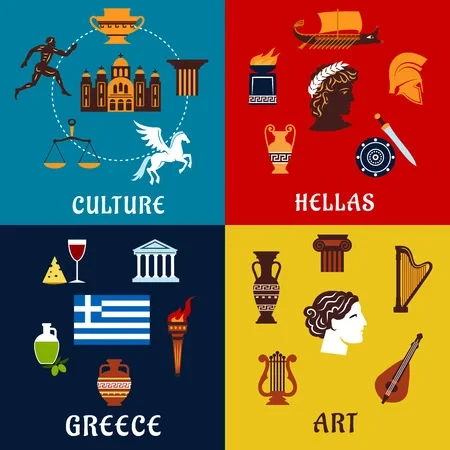 History of Ancient Greece
History of Ancient Greece
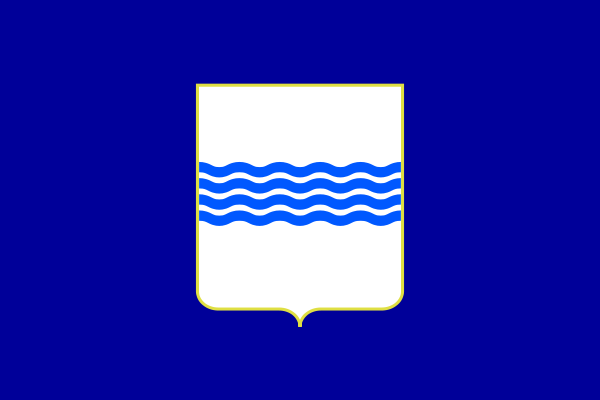 Basilicata
Basilicata
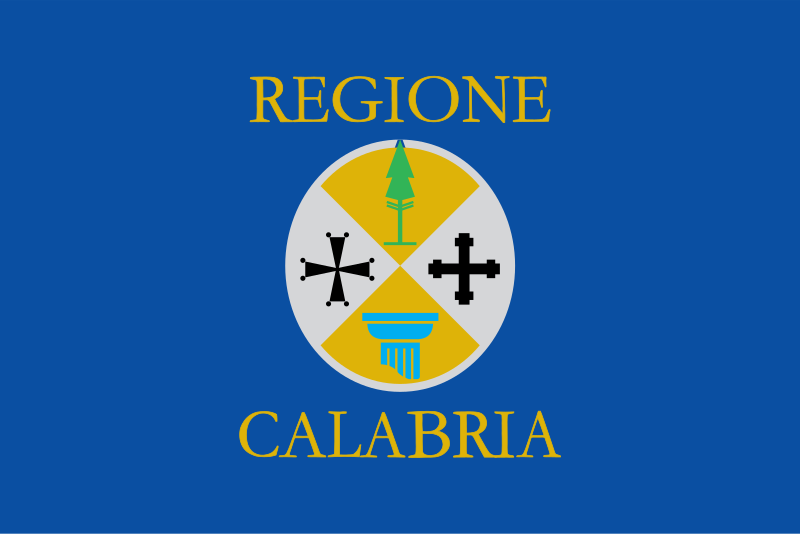 Calabria
Calabria
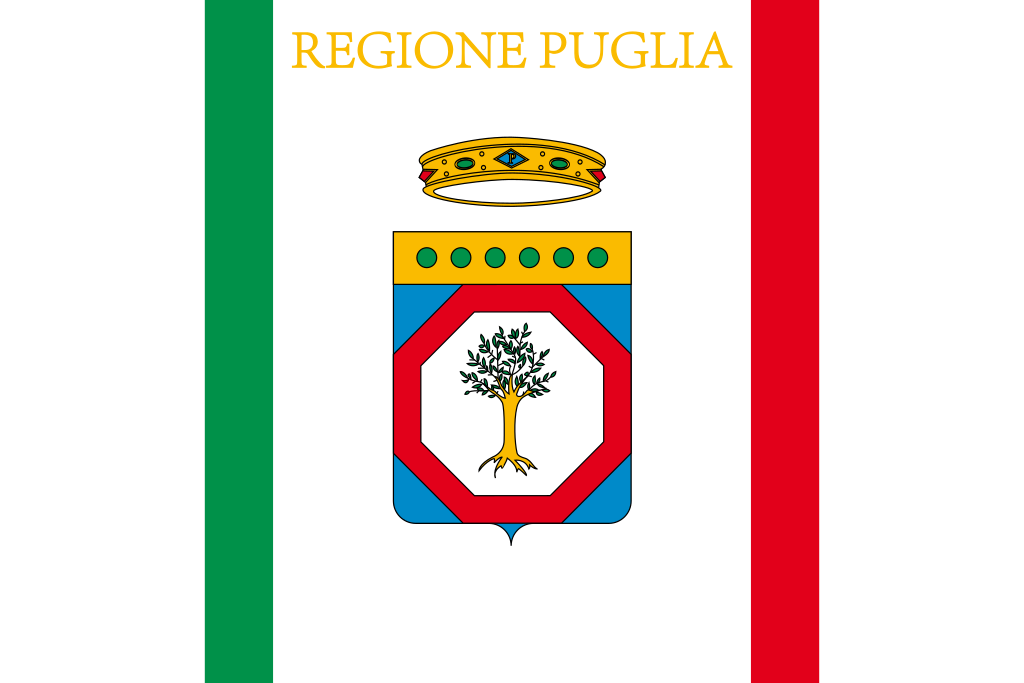 Puglia
Puglia
